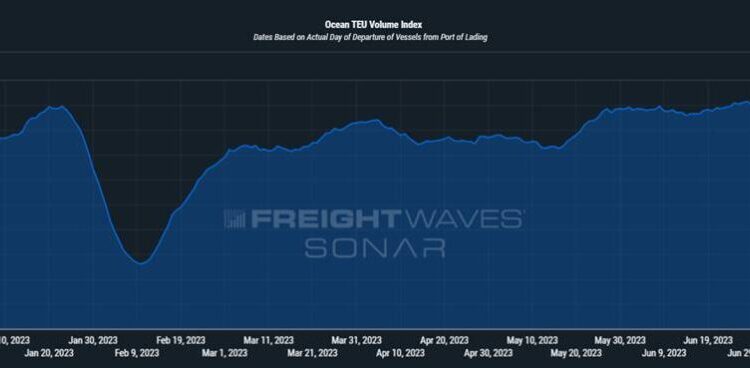There’s new data out on China, and some people say they are “shocked” and “surprised” the country’s manufacturing is hurting. At this point, you want to ask businesspeople who admit this if they are living under a rock. Since June 2022, manufacturing orders have been down 30%-40%.
We are now in peak season and, as all logistics data has shown, it is not going to be stellar. This year’s logistics cycle should be called “peaked season.”
What will be interesting to review this holiday season are the types and the amount of product being moved into stores or shipped directly to customers. What will the consumer buy? At what price point? Based on these questions, economists will get a good glimpse of the health of the consumer.
Last December, Jim Monkmeyer, president for DHL Supply Chain North America, told me he saw more e-commerce items moving out of the warehouses to consumers as well as higher-priced goods into the retailers. Consumers were buying quality versus the cheaper items. What did retail sales for December show when reported in January? Healthy e-commerce and luxury sales. The cheaper items did not move. This is why I say time and time again, trade is a tea leaf that can predict the consumer, the economy and a country’s manufacturing health.
China’s economic health, once buoyed by a click-and-spend consumer, has been wavering for months as a result of massive cuts in manufacturing orders.
The chart below shows the number of containers that have left China to the rest of the world. Now that we are in peak season, the results of a CNBC Supply Chain survey on holiday spending are coming home to roost. Members of retail associations such as the National Retail Federation and the American Apparel and Footwear Association told CNBC they were worried about a consumer impacted by inflation. Retailers brought in fewer holiday items, anticipating lower consumer spending. This year, the items that were brought in were promotional and lower-priced goods. Retailers also said they were importing fewer luxury items for the holidays.
While container volumes are higher than they have been, ocean bookings show the trend should not be going down this time of year. This chart is showing future bookings on vessels from China to the world.
All of this has led to the ocean carrier freight bloodbath. Carriers have been adding holes in their proverbial belts to tighten and slim down vessel space to stop the rate free fall. The higher rejections show that shippers have to wait longer to get on a vessel. Right now, logistics managers have to book ahead six weeks to get on a vessel. This is not a reflection of the immense demand China once was gouging on during COVID, during which all the vessels in the world could not satisfy the global consumer. This also is a tea leaf of “meh” global demand.
While there have been warning signals, there is a positive in all of this. This slowdown has created an opportunity for companies vying for freight in the logistics world to invest in an effort to differentiate and compete, and it will shake out the winners and losers. Good management, excellent customer service, a happy labor force and the ability to be nimble will be key as this “new normal” has yet to be defined.
Greed clouded the judgment of companies in maritime and in retail. They wrongly calculated the good times would continue to roll, leading to a year of bloated inventories, which are still being whittled down. The rose-colored glasses need to be shelved in the warehouse. Now is the time for good business strategy to fuel future logistics growth.
For more information on SONAR — the fastest freight-forecasting platform in the industry — or to request a demo, click here. Also, be sure to check out the latest SONAR update, TRAC— the freshest spot rate data in the industry.
The post What the TEU tea leaves are telling us appeared first on FreightWaves.














